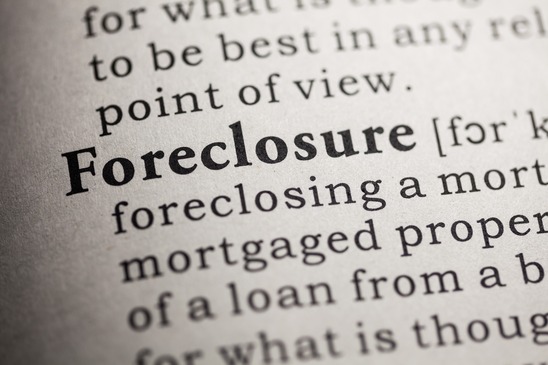Welcome to David I. Pankin, P.C.’s consumer financial updates. David I. Pankin is a Long Island bankruptcy lawyer with offices in Manhattan, Brooklyn and Melville. We’re happy to bring you recent updates about new changes to credit score calculations.
A New FICO Formula
Consumers creditworthiness is summarized using credit scores. There are only a few financial firms that offer credit score formulas for companies to use. The most commonly used credit score is the FICO score which is a product of the Fair Issac Company. The company recently announced that it will be using a new formula that will change the way it calculates credit scores. The new formula could potentially hurt consumers who fall behind in their credit card or loan payments. However, it could benefit those who pay off their debts quickly. It could take months or possibly even years, for most lenders to adopt the new credit formula. The FICO formula has been altered twice since 2009, but many lenders still use the prior 2009 formula. Most are expected to upgrade to this new version, FICO 10 Suite. Lenders often delay using a new FICO formula because of the costs of upgrading from an old formula to a new one. The new formula is expected to be adopted by many lenders in the next year or so.
Changes In The New Formula
Under the new FICO formula, consolidation of outstanding credit card balances with a personal loan or a balance transfer is treated differently. If they consumer continues to accumulate additional credit card debt after consolidation, then they will see a larger negative impact on their credit score than under the previous version. The formula will also evaluate credit card usage trends over a 24-month period rather than utilizing a monthly snapshot. With this formula, someone who carries a high credit card balance for a month or two will not be penalized whereas someone who fails to pay off balances consistently would be penalized.
FICO scores range from 350-800. Scores from 350 to 599 are considered poor; 600 to 669 are seen as fair; 670 to 739 range are considered good; scores between 740 and 799 are very good, and 800-plus is exceptional. Experts who have looked at the impact of past changes in scoring models, think that FICO 10 Suite may shift the average score an estimated 20 to 25 points.
Credit Scores Have Been Increasing
Over the past few years, there has been a trend of increasing credit scores. There are a few factors that have led to higher credit scores for consumers over the last few years. Given the long economic recovery since the Great Recession in 2008-2009, many negative credit indicators, such as bankruptcies and older unpaid debts have been removed from credit reports. Next, some consumers have benefited from the impact of the 2015 settlement between 31 state Attorney Generals and the three major credit bureaus. The settlement grew out of a probe started by Ohio Attorney General Mike DeWine in 2012. He was concerned that consumers were having trouble fixing flawed reports, which potentially impeded their ability to purchase homes or cars, or obtain employment. The settlement set up a 180-day waiting period before medical debt is entered into reports and set up an improved process for disputing both errors and fraudulent information on credit reports. Consumers with lower scores have benefited from improved scores by using new programs such as Experian Boost and UltraFico, which take into account their banking and utility and bill-paying histories, respectively.
What To Do Now To Build Up Your Credit Score
The new FICO score takes more of a consumer’s financial history into account, so there is more reason to maintain good credit practices:
1. Review Your Credit Report: Consumer should periodically check their credit report for errors. Every 12 months, consumers can obtain one free credit report from each of the three major credit bureaus (Equifax, Experian, and TransUnion) at AnnualCreditReport.com. If you find errors on your credit report, dispute them by contacting both the lender and the credit bureaus. If fraud is suspected, the proper authorities should be contacted as well.
2. Pay Your Bills On Time: About 35 percent of the FICO score is based on payment history. If the full balance cannot be paid in full, be sure to pay at least the minimum payment required and avoid a late payment.
3. Limit Your Credit Usage: Credit score is also determined by utilization, how much of one’s available credit limit is being used. This means it is important to avoid running a balance at or near your credit limit.
4. Be Cautious About Applying For New Credit: We realize that while there are many incentives and promotions to open up a new account, but opening up too many new accounts can lower one’s credit score.
5. Sign up for Experian Boost and/or UltraFico: Experian Boost allows consumers to opt-in to providing their cell-phone and utility payments history which can then be used to add positive financial data to the calculation of one’s credit score. UltraFico allows consumers to leverage their checking and savings account data to enhance their credit score. Once the data is incorporated in FICO scores, and most people see their scores go up.
What If Your Credit Score Is Still Dropping?
Are you are struggling financially? Are you only paying the monthly minimums on your credit card statements? Have you fallen behind on your monthly credit card or personal loan payments? If so, you may want to consider filing for bankruptcy to obtain a fresh financial start. You can contact our offices at 888-529-9600 or by using our easy online contact form. Also please feel free to contact us if you have questions regarding your credit report.






